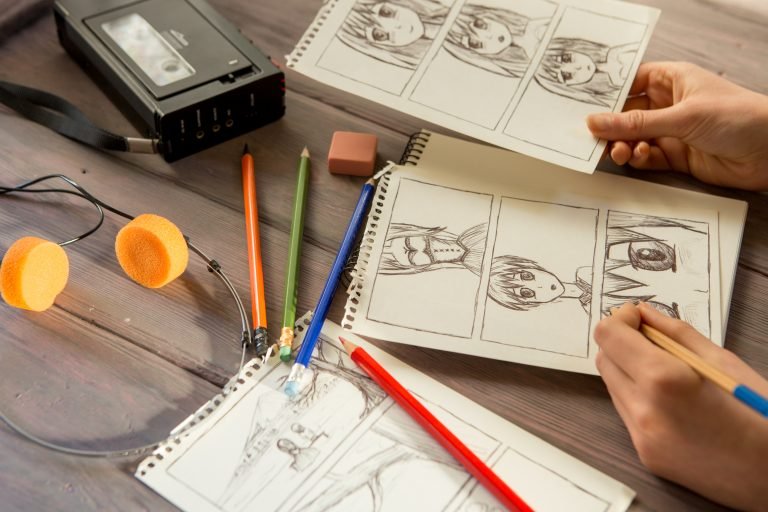The magic of comics lies in the seamless fusion of storytelling and visual art. This medium is a true partnership, where writers and artists collaborate to create captivating narratives that resonate with readers. Both roles are equally vital, and their collaboration determines the success of a comic. Here’s a closer look at how this partnership works and why it’s essential.
1. Crafting the Narrative Together
Writers set the foundation with engaging stories, while artists bring these ideas to life.
- The Writer’s Role: Writers develop the plot, dialogue, and pacing. They provide the roadmap that guides the artist.
- The Artist’s Role: Artists interpret the script, deciding how to visually convey emotions, action, and mood.
- Collaborative Storytelling: Writers and artists work together to ensure the narrative flows seamlessly between text and visuals.
2. Creating Dynamic Visuals
The interplay between text and imagery makes comics a unique medium.
- Balancing Words and Art: Writers need to trust the artist to convey parts of the story visually, reducing excessive dialogue.
- Panel Composition: Artists and writers discuss layouts to ensure key moments get the attention they deserve.
- Expressing Themes: Collaboration helps align the tone of the visuals with the themes and emotions of the story.
3. Overcoming Challenges Together
Effective communication is crucial to tackle creative challenges.
- Revisions and Feedback: Writers may adjust scripts based on the artist’s input, and artists tweak visuals after discussions with writers.
- Problem-Solving: When roadblocks arise, such as unclear scenes or pacing issues, collaboration ensures smooth resolution.
4. Building a Shared Vision
A successful comic requires a unified vision between the writer and artist.
- Pre-Production Discussions: Early conversations about the story’s tone, style, and structure align both contributors’ goals.
- Mutual Respect: Recognizing and valuing each other’s expertise fosters a productive partnership.
- Creative Freedom: Allowing space for creative expression on both sides often leads to unique, memorable work.
5. Examples of Iconic Collaborations
History is filled with legendary writer-artist duos who revolutionized comics.
- Stan Lee and Jack Kirby: Their collaboration at Marvel created iconic characters like Spider-Man and the Avengers.
- Neil Gaiman and Dave McKean: Together, they produced the visually stunning Sandman series.
- Alan Moore and Dave Gibbons: Their partnership on Watchmen showcased the heights of storytelling and visual art synergy.

6. Why Collaboration Matters
The harmony between writers and artists is what transforms a good comic into a masterpiece.
- Enhanced Storytelling: Collaboration ensures both text and visuals complement each other for a richer narrative experience.
- Unique Styles: Every partnership brings a unique flavor, adding diversity to the comic book medium.
- Audience Connection: When writers and artists are in sync, readers enjoy a seamless, immersive journey.
Conclusion
The collaboration between writers and artists is the heart of comic book creation. It’s a delicate balance of communication, respect, and shared creativity. By working together, they craft stories that not only entertain but also inspire and leave lasting impressions on readers.











